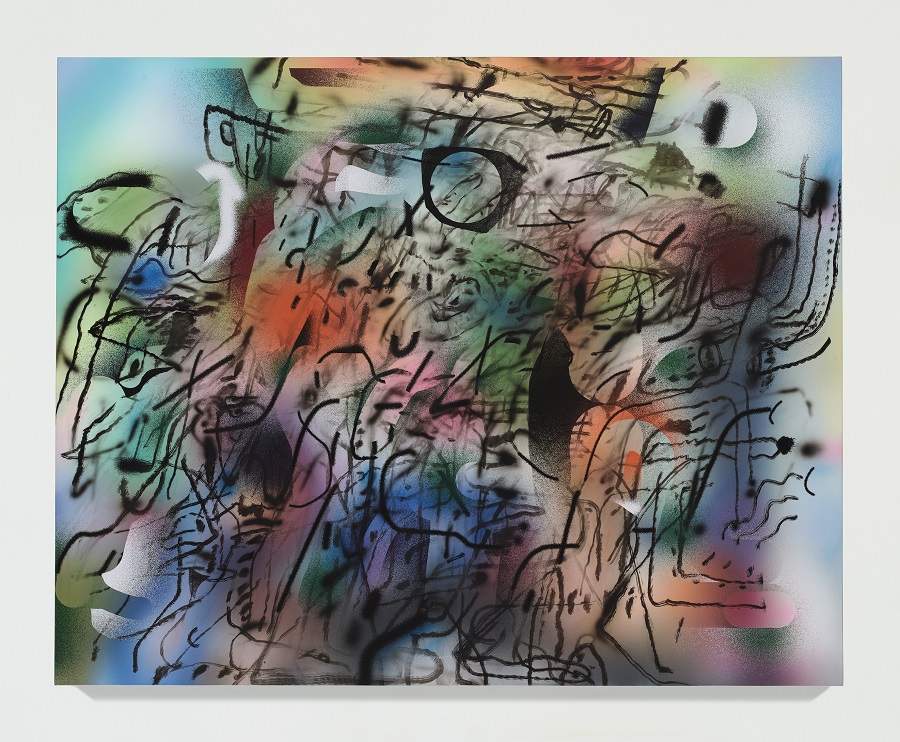Palazzo Grassi announces 2024 exhibitions: Pierre Huyghe and Julie Mehretu
Pierre Huyghe, Julie Mehretu and Edith Dekyndt: they are the three protagonists of the 2024 exhibition season at Palazzo Grassi - Punta della Dogana in Venice. The Venetian institution today announced two major exhibitions to be held in the spring of next year, as well as a special project. It begins with Pierre Huyghe, on view at Punta della Dogana from March 17 to November 24, 2024: the institute invited Pierre Huyghe to conceive, together with curator Anne Stenne, a major new exhibition featuring a large nucleus of his works some of which come from the Pinault Collection.
For Pierre Huyghe, the ritual of the exhibition is an encounter with a sentient context that generates new possibilities of interdependence between events and the elements that manifest. His works are conceived as speculative fictions that often reveal themselves as a union of different forms of intelligence that learn, change and evolve in the course of the exhibition. For Punta della Dogana, the French artist creates his largest exhibition to date, transforming the venue into a dynamic medium, a transitory condition where time and space as well as everything that passes through it, visible or invisible, become an integral part of the artworks.
The exhibition will become the place where subjectivities are formed, with or without a body, circulating and manifesting unpredictably through the works, which in turn become sentient entities. An unknown language is created, without end, without addressee, taking possession of voices, gestures, images, and generating new real or fictitious situations. Populated by inhuman entities, human and nonhuman, traversed by natural or artificial phenomena, the exhibition explores, in real time, the conditions that allow different entities to coexist, sometimes even to hybridize, without hierarchical distinction or specific determination. A central figure in the search for art’s relations with the nonhuman, Pierre Huyghe adopts, from his earliest works, another perspective than the human - inhuman - to let what lies outside our understanding, outside our possibility of experiencing it, emerge. Pierre Huyghe questions our perception of reality and proposes, through the construction of other possible realities, to become strangers to ourselves. The exhibition will be presented in partnership with the Leeum Museum of Art in Seoul, which will host a Pierre Huyghe exhibition in February 2025.

Julie Mehretu’s exhibition, which runs through Jan. 6, 2025, will also begin on March 17. Curated by Caroline Bourgeois in collaboration with Julie Mehretu, it will be a major exhibition project devoted to the work of the American artist. The exhibition includes works made by artists who are part of Julie Mehretu’s circle of close friends or personalities who have influenced her (Nairy Baghramian, Huma Bhabha, Robin Coste Lewis, Tacita Dean, David Hammons, Paul Pfeiffer, and Jessica Rankin), placing painting in dialogue with poetry, sculpture, film, voice, and music, and brings together more than sixty of Julie Mehretu’s paintings and etchings made during a twenty-five-year period, including many of the paintings made by the artist between 2021 and 2023. Presented on the two exhibition floors of Palazzo Grassi, the exhibition includes works from the Pinault Collection, as well as loans from the artist’s own collection, international museums, and private collections. Julie Mehretu’s practice is characterized by various forms of sustained collaboration and conversation with other artists. By foregrounding the relationship between intellectual and emotional affinities and artistic production, the exhibition draws a collective portrait of an artistic community in constant dialogue. Julie Mehretu’s work is abstract: her sensuous and emotive compositions are steeped in traces and imaginative marks that rise to the surface from a density of complex and layered ideas that originate in her longstanding engagement with the traditions and traces of history and photography. His references are wide-ranging: art history, sociopolitics, geography, current events and private life. Yet, her insistence on the language of abstraction has offered her a unique emancipatory space for experimentation and expression.

Finally, starting in April 2024, Edith Dekyndt’s work Song to the Siren will be on view. In the light of a morning in the fall of 2022, Edith Dekyndt has captured a young woman lying in the waters of the lagoon, next to the Monument of the Partisan that stands along the shore, facing the Gardens of Venice. The young woman clutches in her hand a white cloth with which she cleans, cleanses, repairs, caresses or, again, consoles, the bronze statue that portrays a woman from another era, partially submerged in the lagoon, her hands tied, probably headed toward her end, as were many partisans, including Venetians, during World War II.
In this video work, presented in the Foyer of Palazzo Grassi’s Teatrino, Edith Dekyndt brings the viewer’s attention to the possibility of cultivating and preserving memory, to avert its possible repetition. The bronze sculpture, created in 1969 by sculptor Augusto Murer, is placed on a hydraulic structure and pedestal conceived by Carlo Scarpa.
The work Song to the Siren is part of a series of actions in which the same gesture is repeated at historic public monuments, chosen because of their resonance in the contemporary world. The titles of the interventions always take up song titles assume an open and eternal echo. In this case the title is Song to the Siren (1970), a song written by Larry Beckett and Tim Buckley and reinterpreted over time by numerous artists, from This Mortal Coil to Robert Plant.
 |
| Palazzo Grassi announces 2024 exhibitions: Pierre Huyghe and Julie Mehretu |
Warning: the translation into English of the original Italian article was created using automatic tools. We undertake to review all articles, but we do not guarantee the total absence of inaccuracies in the translation due to the program. You can find the original by clicking on the ITA button. If you find any mistake,please contact us.





























